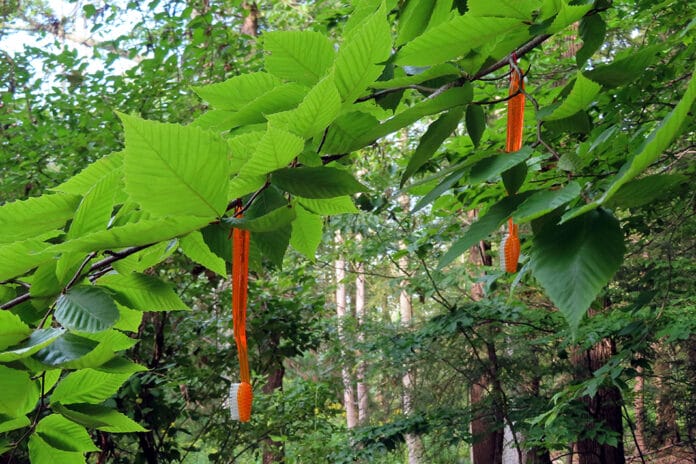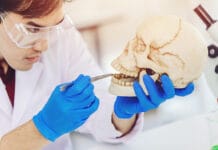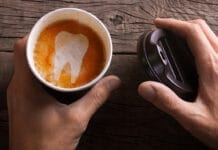Can toothbrushes grow on trees? Yes, they can, and they’ve grown on trees for thousands of years. The World Health Organization recommends that they be used regularly within the communities in which their use is customary.1 Let me explain.
During the 500 years between 3500 BC and 3000 BC, in the fertile land of ancient Mesopotamia located between the Tigris and Euphrates rivers, the Sumerian civilization flourished and invented the future of humankind.2
Meanwhile, in the years beginning around 3000 BC, the Egyptians began creating the formal practice of medicine. Hesi-Re, the first known Egyptian physician who specialized in dentistry, lived during this time. His life is documented on six wooden panels discovered in his tomb. The panels are now located in the Egyptian Museum in Cairo. The first panel’s hieroglyphics describe him as “the greatest of the physicians who treat the teeth.”2 During his life, physicians in Egypt began to specialize in healing certain areas of the human body, and this panel in his tomb tells us that Hesi-Re’s interests led him to become a “man of the tooth.”2
What did these two civilizations have in common? The writings and artifacts found in the tombs of these long-ago days tell us that both the Sumerians and the Egyptians were using something to clean their teeth called a chewing stick.3 In Saudi Arabia and many other Muslim countries, the chewing stick is known as a miswak, meaning “tooth-cleaning stick” or a “stick used on teeth and gums to clean them” in Arabic. However, synonyms exist in different Arabic dialects, such as “siwak” or “miswaki.”4 Further, chewing sticks have different names in different cultures, such as “qesum” in Hebrew, “koyoji” in Japanese, and “mastic” in Latin.4
Over the centuries, chewing sticks have been made from a variety of trees, such as arak trees, known as “toothbrush trees” (the binomial name is Salvadora persica), native to the Middle East, much of Africa, and India; neem trees, native to India, Burma, and later introduced to Africa and other countries; and even walnut and olive trees.5 In addition to these trees being used for making chewing sticks for oral health, some have medical and/or social and religious significance, which is why arak trees are used most for making chewing sticks.4
The indigenous peoples of Africa, the Middle East, and India (tribes or other groups that share ancestral ties to the lands and natural resources where they live) typically use a form of miswak made from either the arak or other similar tree. Click here to view a video showing how a tribe in Kenya gathers and uses miswak.6
Salvadora persica is a well-branched shrub or a small tree with whitish-yellow wood, somewhat fleshy leaves, and greenish-yellow flowers.7 The ripened pieces of fruit are 5 to 10 mm spherical pink-to-scarlet-colored globes.8 Image 1 is an illustration of a typical branch of Salvadora persica by French naturalist Jean-Baptiste Lamarck from his 1791 collection of botanical illustrations.1,9

Courtesy of the British Library1,9
(CC BY 4.0 https://creativecommons.org/licenses/by/4.0/)
Social and Religious Reasons for Using Miswak
The ancient Arabs used chewing sticks to keep their teeth shiny and white to instill attractiveness.4 Many African tribes value the appearance of white teeth that they achieve by using a miswak.6 The Fulani people who inhabit Sudan admire white teeth so much that they blacken their lips to emphasize their teeth. The Fulani were among the first Africans to convert to Islam.2
In The Gambia, the longer branches of the arak tree used for miswak carry varying spiritual meanings within the African indigenous faith.1 The authoritative codes of Hinduism (the laws of Manu) stipulate that the teeth be cleaned as part of a daily oral hygiene ritual. In Buddhism, Buddha received a “tooth stick from the god, Sakka.”10
The use of a miswak began thousands of years before Islam but was incorporated into Islam in 610 AD as part of religious practice. The Islamic Prophet Mohammad strongly recommended the use of a miswak. He used it himself and made it a practice to use it before bed, after rising, before and after meals, during fasting, and before prayer recitation.4
Today, a miswak and a modern toothbrush are often used by practicing Muslims.4 “The spread of Islamic culture has had a profound influence on the propagation and use of miswak.”10
Where does Salvadora persica grow?
Image 2 shows a map of the regions of the world where Salvadora persica is distributed.11 It can also grow in other countries that have weather and soil conditions conducive to its growth. When the latest population data (August 8, 2023) is tabulated for this entire area (all of Africa, the Middle East, and India), it shows that nearly 40% of the world’s people live in the countries shown in Image 2.12 This means that about 4 out of 10 people on earth live in a region where Salvadora persica grows nearby, allowing them to easily make a miswak. Ready-made miswak is now available in stores and through online websites worldwide.
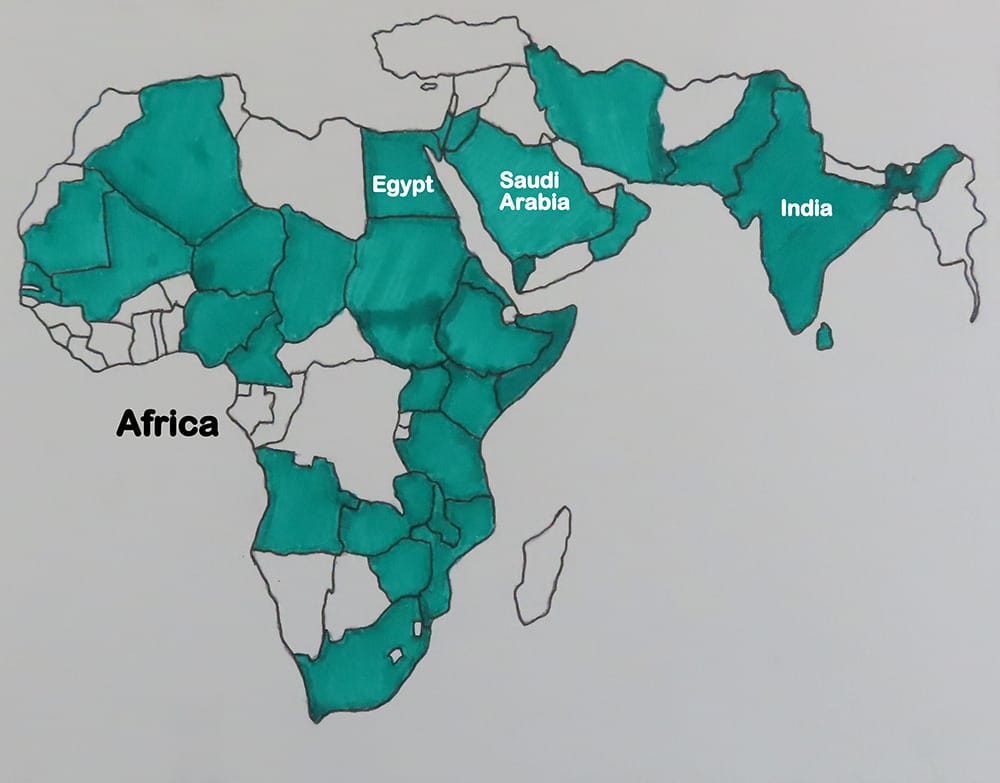
Making and Brushing with a Miswak
Miswak chewing sticks are readily available by searching for those who supply them on the internet. Simply use the search phrase “miswak stick.” If you were to make one, you would need a piece of a twig from an Arak tree cut to about 15 cm in length and about 1 cm in diameter (see Images 3 and 4).
Cut off about 1.5 cm of the bark from one end of the twig, then either chew the exposed fibers with your molars to loosen them so that they flare out some or first soak the trimmed end of the twig in a glass of water for about four hours to help make the fibers loose and easier to separate.13
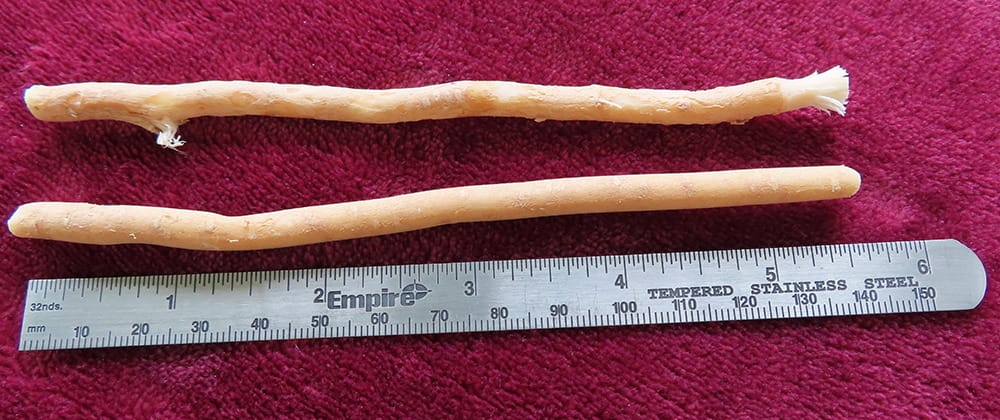
Courtesy of Nick Timko
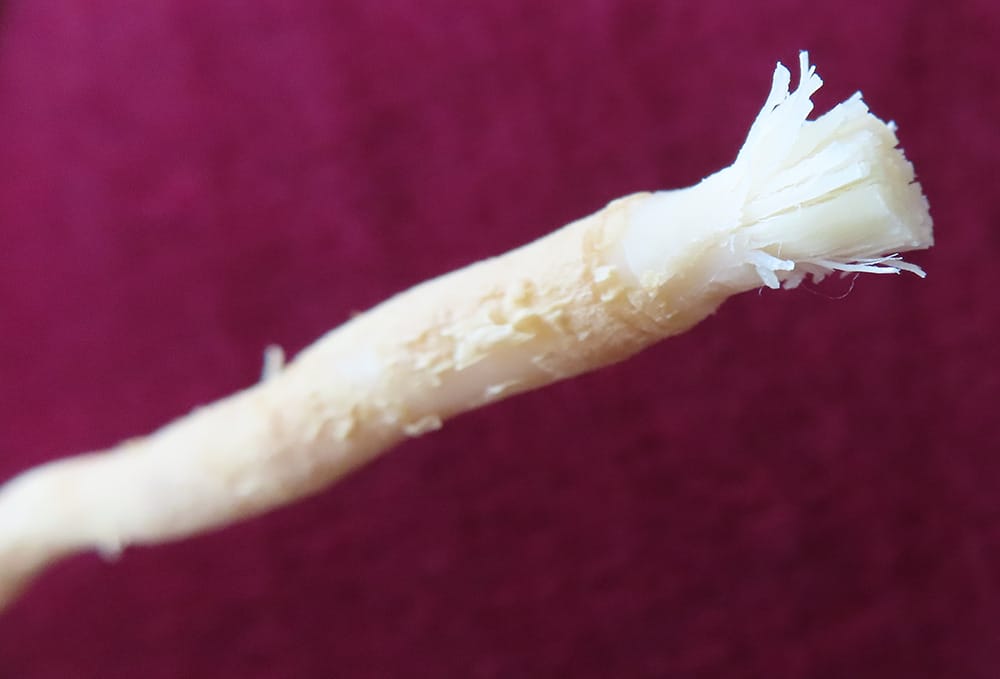
Courtesy of Nick Timko
Hold the miswak as shown in Image 5 (known as a five-finger grip) and gently brush the facial areas of the maxillary and mandibular teeth with an up-and-down movement of the miswak.14 To brush the lingual and occlusal areas of the maxillary and mandibular teeth, I recommend holding the miswak with a pencil grip to make it easier to manipulate these areas.
Individual fibers will begin to break off with regular use. Many manufacturers of miswak chewing sticks label their packages with a message similar to the following: Accidental ingestion of the fibers poses no health issues, but the product is intended for external use. Click here to view a video showing how a tribe in Kenya routinely expectorates most of the fibers that break off.6 When the fibers that are left appear too thinned out or worn out to use, repeat the trimming of the bark back about another 1.5 cm to expose fresh fibers.14
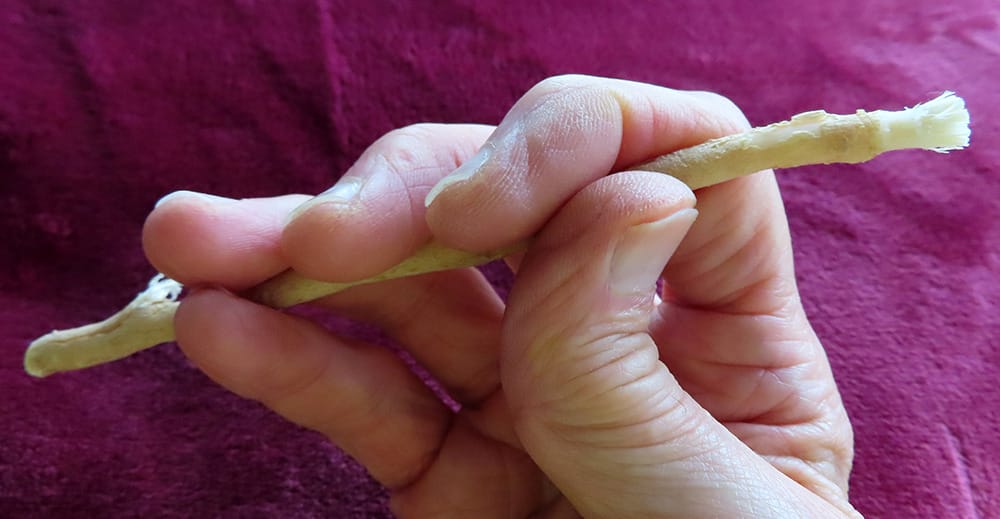
Courtesy of Nick Timko
The Chemical and Medicinal Uses of Salvadora persica
In addition to the mechanical aspects of Salvadora persica when used as a toothbrush, it has many other documented significant chemical and medicinal actions relating to human overall and oral health.15
Documented oral effects of Salvadora persica include anti-gingivitis, anti-plaque, anti-cariogenic, anti-fungal, promotion of wound healing, tooth whitening properties, orthodontic chain preservation, and biocompatibility with oral cells (see Table 1).14,15
| Chemical | Mode of Action | Beneficial Role |
| Fluoride | Antimicrobial | Anti-cariogenic
Tooth remineralization |
| Vitamin C | Healing
Repair |
Healing of oral tissue |
| Silica | Abrasive | Removes plaque and stains on teeth |
| Tannic acid | Astringent
Anti-gingivitis Anti-plaque Anti-fungal |
Reduces plaque and gingivitis Reduces Candida albicans |
| Sulfur | Bacteriocidal | Reduces bacterial count |
| Sodium bicarbonate | Mild abrasive | Used as a dentifrice |
| Calcium | Inhibits demineralization
Promotes remineralization |
Buffer |
| Chloride | Inhibits calcium formation | Buffer |
| Alkaloid | Bacteriocidal
Anti-fungal |
Stimulatory effect on gingiva |
| Essential oils | Antiseptic | Disinfects |
| Benzylisothiocyanate | Bacteriocidal
Viricidal against herpes simplex |
Preventive against genotoxic and carcinogenic compounds |
| Resins | Bactericidal
Forms a protective layer on dental enamel |
Protective agent against dental caries |
Table 1 Chemicals and benefits of Salvadora persica
Adapted from Haque, M.M., et al., Niazi, F., et al., Jassim, SA, et al.5,14,16
Some of the microorganisms that are hindered by Salvadora persica in the oral cavity include decay-causing S. mutans, bacterial endocarditis-causing S. sanguis, and periodontal-causing P. gingivalis and A. actinomycetemcomitans.17,18
Endodontic Use
Apart from the chemical and mechanical benefits related to oral hygiene, endodontics has also benefited from the research on Salvadora persica. Endodontic treatment of a tooth involves chemical and mechanical instrumentation to disinfect the infected root canals to remove the pathogenic microbes causing the infection. Once disinfected, obturation prevents the reentry of bacteria and their byproducts.18
One of the most detected pathogens in failed endodontic treatment cases is E. faecalis. One study evaluated Salvadora persica in combination with antimicrobial agents such as penicillin or tetracycline against E. faecalis and other endodontic pathogens. Positive results were seen against all the experimental pathogens, with the exception of C. ablicans due to their biological activity.18 It has also been mixed with various root canal sealers, resulting in improvements in bacterial growth inhibition.18
Salvadora persica Toothpastes, Mouthwashes, and More
Salvadora persica is sold in stores throughout the world and on the internet. It is commercially available, contained in toothpaste, mouthwash, tooth whitener, and chewing gum, and professionally available as an endodontic irrigating solution and an aid in the determination of DNA profiling.9,13 The toothpastes and mouthwashes usually contain an extract of Salvadora persica.
To learn more, simply search the internet using terms like “miswak toothpaste” or “miswak mouthwash.”
Parting Thoughts
In the Western world, 40% of the drugs on today’s pharmacy shelves are derived from plants, most of them used by humankind for centuries. This 40% includes the top 20 best-selling prescription drugs in the United States.19 Salvadora persica is one of these plants providing pharmaceutical benefits.
As the world becomes a smaller, more closely connected planet due to technical advances in travel and more businesses with worldwide manufacturing plants and markets, the likelihood of providing dental treatment to patients with unique and varied cultures is increasing. Dental professionals should be culturally prepared to serve diverse patient populations, such as those who use miswak, with the ultimate goal of quality oral health care for all population segments.10
Before you leave, check out the Today’s RDH self-study CE courses. All courses are peer-reviewed and non-sponsored to focus solely on high-quality education. Click here now.
Listen to the Today’s RDH Dental Hygiene Podcast Below:
References
- Khadija Saye’s Art and the ‘Toothbrush Tree.’ (2021, October 4). British Library: Asian and African Studies Blog. https://blogs.bl.uk/asian-and-african/2021/10/khadija-sayes-art-and-the-toothbrush-tree.html
- Ring, M.E. (1992). Dentistry: An Illustrated History. Harry N Abrams Inc.
- Shirzaiy, M., Sarani, Z., Bagheri, S. Miswak/Derum Manipulation, a Common Habit in Baluchestan, Iran. Int J High Risk Behav Addict. 2016; 5(2): e25948. https://www.ncbi.nlm.nih.gov/pmc/articles/PMC5002340/pdf/ijhrba-05-02-25948.pdf
- Haque, M.M., Alsareii, S.A. A Review of the Therapeutic Effects of Using Miswak (Salvadora persica) on Oral Health. Saudi Med J. 2015; 36(5): 530-543. https://www.ncbi.nlm.nih.gov/pmc/articles/PMC4436748/pdf/SaudiMedJ-36-530.pdf
- National Research Council (US) Panel on Neem. (1992). NEEM: A Tree For Solving Global Problems. National Academy Press (US). ISBN 0-309-04686-6.
- Metropolis. (2011, June 22). Brushing Your Teeth with a Twig in Kenya [Video]. YouTube. https://www.youtube.com/watch?v=TPZ7kOxo9II
- Khatak, M., Khatak, S., Siddqui, A.A., et.al. Salvadora persica. Pharmacognosy Reviews. 2010; 4(8): 209-214. https://www.ncbi.nlm.nih.gov/pmc/articles/PMC3249923/pdf/PRev-4-209.pdf
- Kumari, A., Parida, A.K., Rangani, J., Panda, A. Antioxidant Activities, Metabolic Profiling, Proximate Analysis, Mineral Nutrient Composition of Salvadora persica Fruit Unravel a Potential Functional Food and a Natural Source of Pharmaceuticals. Frontiers in Pharmacology. 2017; 8: 61. https://www.frontiersin.org/articles/10.3389/fphar.2017.00061/full
- Tableau Encyclopedique et Methodique des Trois Regnes de la Nature. (1791). Internet Archive. http://www.archive.org/details/tableauencyclop1250lama
- Aboul-Enein, B.H. The Miswak (Salvadora persica L.) Chewing Stick: Cultural Implications in Oral Health Promotion, The Saudi Journal for Dental Research. 2014; 5(1): 9-13. https://www.sciencedirect.com/science/article/pii/S2210815713000188
- Varma, S.R., Sherif, H., Serafi, A., et.al. The Anti-plaque Efficacy of Two Herbal-Based Toothpastes: A Clinical Intervention. J Int Soc Prevent Communit Dent. 2018; 8: 21-27. https://www.ncbi.nlm.nih.gov/pmc/articles/PMC5853038/pdf/JISPCD-8-21.pdf
- World Population. (2023, July 16). Worldometer. https://www.worldometers.info/world-population/
- Yasmin, W., Ramli, H., Alias, A. Miswak: The Underutilized Device and Future Challenges. Journal of Dentistry and Oral Hygiene. 2019; 11(2): 6-11. https://academicjournals.org/journal/JDOH/article-full-text-pdf/A12105162146
- Niazi, F., Naseem, M., Khurshid, Z., et.al. Role of Salvadora persica Chewing Stick (Miswak): A Natural Toothbrush for Holistic Oral Health. Eur J Dent. 2016; 10: 301-308. https://www.thieme-connect.com/products/ejournals/pdf/10.4103/1305-7456.178297.pdf
- Farag, M., Abdel-Mageed, W.M., El Gamal, A.A., Basudan, O.A. Salvadora persica L.: Toothbrush Tree with Health Benefits and Industrial Applications – An Updated Evidence-based Review. Saudi Pharmaceutical Journal. 2021; 29(7): 751-763. https://www.sciencedirect.com/science/article/pii/S1319016421001043
- Jassim, S.A., Hammud, K.K., Alsheekhly, B. Valuable Dental Materials from Salvadora Persica Plants. Medico-legal Update. 2021; 21(1): 893-903. https://pdfs.semanticscholar.org/c0d4/04a111dc4585a344e6f74e2f6f4e7643ef13.pdf
- Chuang, J., Siddiqui, A.R. Association of Streptococcus sanguinis Infection with Colorectal Carcinoma. Consultant. 2019; 59(1): 30-31. https://www.consultant360.com/article/infectious-diseases/bacterial-infections/association-streptococcus-sanguinis-infection
- Aljarbou, F., Almobarak, A., Binrayes, A., Alamri, H.M. Salvadora persica’s Biological Properties and Applications in Different Dental Specialties: A Narrative Review. Evidence-Based Complementary and Alternative Medicine. 2022; 2022: 8667687. https://downloads.hindawi.com/journals/ecam/2022/8667687.pdf
- Medicinal Botany. (n.d.). USDA: U.S. Forest Service. https://www.fs.usda.gov/wildflowers/ethnobotany/medicinal/index.shtml

